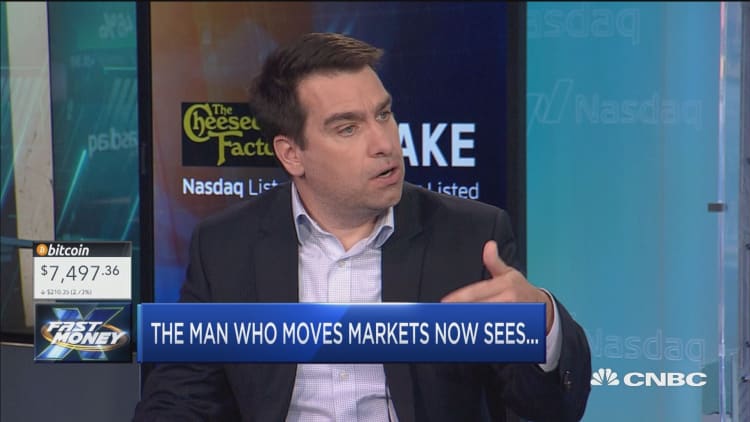There's a yawning chasm between the real U.S. economy and how markets are behaving, and the media is to blame, according to J.P. Morgan Chase's top quant Marko Kolanovic.
Strong corporate profit growth and consumer spending signal that the economic expansion isn't about to end, in contrast to future price-earnings estimates and institutional equity holding levels near five-year lows, Kolanovic wrote Friday in a 2019 outlook note. He has a 3,100 target on the S&P 500, which would be a 17 percent increase from current levels.
"Positive GDP and earnings are 'reality,' which is currently starkly disconnected from equity sentiment, valuation, and positioning," Kolanovic said in the note.
Despite the positive backdrop, markets have been pummeled amid concerns about U.S.-China trade tensions and slowing economies worldwide. This week alone the major indexes were all down more than 3 percent, and the moves have been violent. One reason attributed to the declines has been the reversal of central banks' programs that bought trillions of dollars of assets after the financial crisis.
'Fake negative news'
"While higher volatility that comes with less monetary support warrants somewhat lower equity valuations, lower risk positioning, higher equity volatility and higher credit spreads, we think that the current divergence is simply too large," Kolanovic said in the note. "To some extent, we trace the disconnect between negative sentiment and macroeconomic reality to the reinforcing feedback loop of real and fake negative news."
Kolanovic cited a combination of domestic political groups, analysts and foreign actors who are amplifying negative headlines to sow discord and erode faith in markets. There are "specialized websites" that present a blend of real and fake news and distorted write-ups of financial research, he said, without citing the specific sites.
"If we add to this an increased number of algorithms that trade based on posts and headlines, the impact on price action and investor psychology can be significant," Kolanovic said.
One recent example, according to Kolanovic: The news of the arrest of an executive from Chinese hardware manufacturer Huawei came days after the actual event, disrupting futures trading and stoking fears that talks with China were unraveling, he said. Equity futures plunged on the report, prompting exchanges to halt trading several dozen times.
"The current US administration has also given more than enough material (e.g., tweets, etc.) to be exploited by these actors in order to create an environment of investment uncertainty (e.g., on issues of global trade, oil, business decisions of individual companies, etc.)," Kolanovic said.



